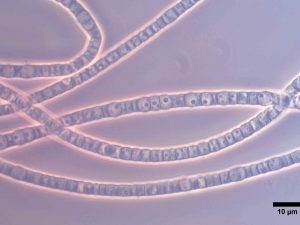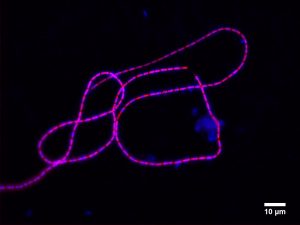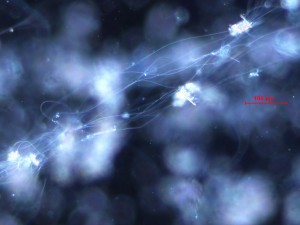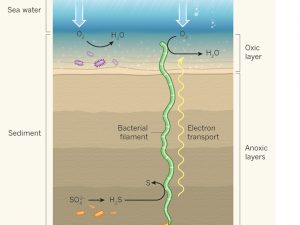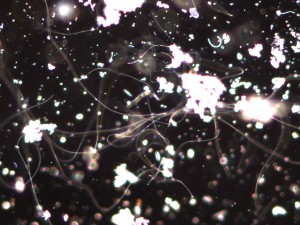
Figure 1. A small volume of marine sediment exhibiting long-distance electron transport is deposited on a microscopy slide. The sediment shows conspicuous long white “spaghetti”-like wires, which turn out to be long filamentous cable bacteria.
Microbial electricity: a true surprise from the seafloor
Some 10 years ago, strange data were obtained in laboratory experiments with marine sediments from the Baltic Sea. These sediments showed unusual depth profiles of pH and other chemical compounds in the upper centimeters. The only way to explain these strange data, was to assume that electrical currents are running through the upper layer of the seafloor (Nielsen et al., 2010). The phenomenon was called long-distance electron transport (LDET), and at that stage, it was unclear what the cause was of these currents, nor was it known whether there was any biology involved. Some scientists speculated that it was a purely abiotic process, in which electrons were exchanged between conductive minerals in the sediment matrix.
In 2012 however, microscopic investigations provided compelling evidence that the electrical currents were biologically mediated (Pfeffer et al., 2012). A novel type of long, multicellular bacteria was always found in close association with LDET, and closer investigations demonstrated that these so-called cable bacteria were responsible for the electron flow that was observed in the sediment. Somehow electrons were transferred along the axis of these long, multicellular bacteria. This idea shook the field of microbiology, as it implied a novel and perplexing form of interaction between cells based on electricity.

